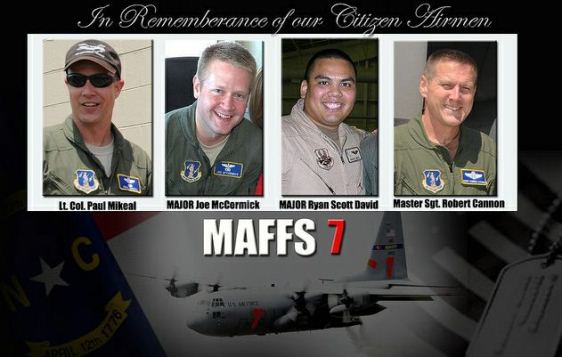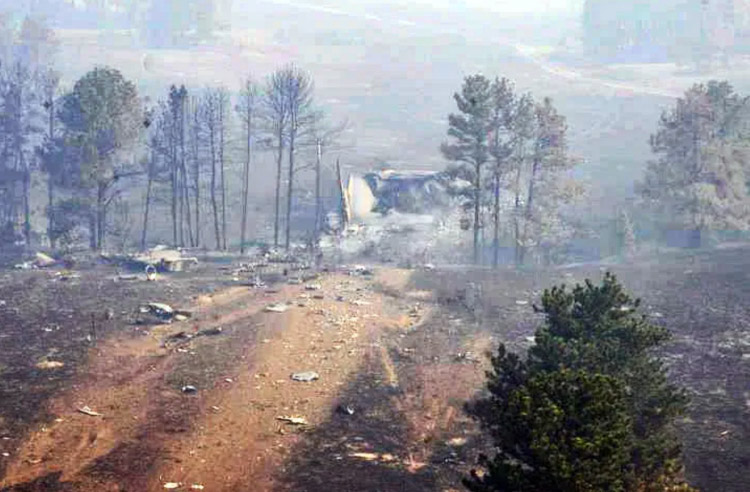
(This article was first published at Fire Aviation)
Yesterday four buildings at the North Carolina Air National Guard Base at the Charlotte Douglas International Airport were dedicated to the four airmen who were killed in an aircraft crash July 1, 2012 while fighting the White Draw Fire northeast of Edgemont, South Dakota. Their C-130 was serving as an air tanker using a Modular Airborne FireFighting System (MAFFS) in the cargo hold which enables the aircraft to drop up to 3,000 gallons of fire retardant on a wildfire. There were four fatalities. The two loadmasters operating the MAFFS unit in the rear of the aircraft were seriously injured but survived.

145th Airlift Wing, Public Affairs North Carolina Air National Guard.
The article below about the June 9 building dedication event was written by Staff Sgt. Laura Montgomery, Public Affairs with the North Carolina Air National Guard.
As the rain descends, reverent family and friends of the North Carolina Air National Guard gather in a hangar at the base June 9, 2019 to commemorate the devastating loss of four crew members of the Modular Airborne Fire Fighting System seven mission over South Dakota that occurred July 1, 2012. The four fallen members, Lt. Col. Paul K. Mikeal, Maj. Joseph McCormick, Maj. Ryan S. David, and Senior Master Sgt. Robert S. Cannon, have buildings dedicated in their honor, including the new base operations, small air terminal, an aircraft maintenance hangar, and soon-to-be built flight simulator.

“These Airmen selflessly gave their lives executing our C-130 Modular Airborne Fire Fighting System mission while fighting the White Draw Fire in South Dakota, “ said Maj. Joel Kingdon, 156th Airlift Squadron, “Today we say thank you to the families for their sacrifice, and we forever memorialize our fallen heroes by dedicating these buildings to serve as a lasting tribute of their service to our country.”
Members of the fallen Airmen took turns speaking about their loved ones and reflecting on joy they brought to their lives and their thankfulness for the men and women of the North Carolina Air National Guard.
“We’re unbelievably grateful for this building, we never really imagined anything like this happening,” stated Alex Cannon, son of the late Senior Master Sgt. Robert S. Cannon, “We feel only closer with the people here today, we look forward to seeing everyone and we hope to maintain these relationships.”

145th Airlift Wing, Public Affairs North Carolina Air National Guard.
As these buildings are erected and modified to suit the new mission of the North Carolina Air National Guard, we reflect on the dedicated service of our fallen Airmen and their willingness to answer a call for something bigger than themselves.
“We take this moment, this chance to memorialize and remember these gentlemen, not because of the fact that they perished on that fateful day but because they actually served faithfully,” said Maj. Gen. Gregory A. Lusk, Adjutant General of the North Carolina National Guard, “The fact that they rose above and answered the call to respond to and secure the blessing of liberty.”





